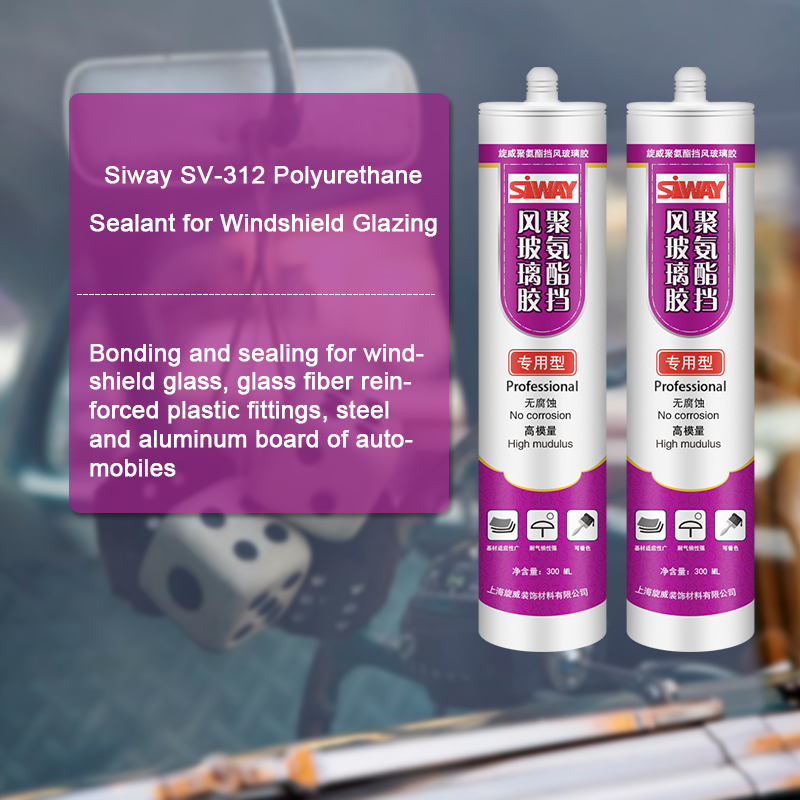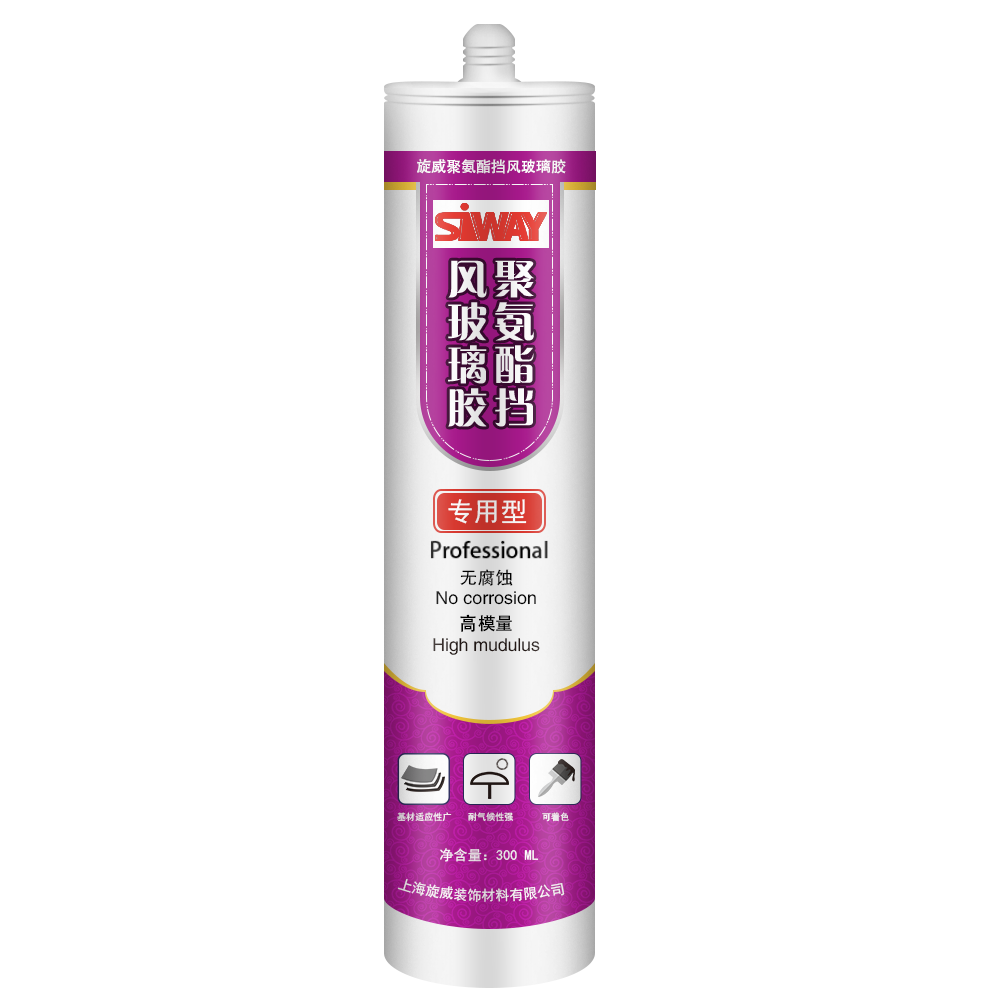Good Quality SV-312 Polyurethane Sealant for Windshield Glazing Export to New Zealand
Short Description:
Description SV-312 is an isocyanate-free, high modulus,non conductive, thixotropic, single component modified polyurethane adhesive, which polymerizes rapidly under the effect of atmospheric moisture. It has been specially designed for bonding of fixed glass in automotive repair. It allows a drive away time of 6 hours in vehicles with or without airbag. *Providing the ambient temperature is at least 23°C and relative humidity 50 %. At lower temperatures and humidities drive away time will be...
With our rich experience and considerate services, we have been recognized as a reliable supplier for many international buyers for Good Quality SV-312 Polyurethane Sealant for Windshield Glazing Export to New Zealand, We welcome new and old customers from all walks of life to contact us for future business relationships and mutual success!
Description
SV-312 is an isocyanate-free, high modulus,non conductive, thixotropic, single component modified polyurethane adhesive, which polymerizes rapidly under the effect of atmospheric moisture. It has been specially designed for bonding of fixed glass in automotive repair.
It allows a drive away time of 6 hours in vehicles with or without airbag.
*Providing the ambient temperature is at least 23°C and relative humidity 50 %.
At lower temperatures and humidities drive away time will be longer.
Where to use
Bonding and sealing for windshield glass, glass fiber reinforced plastic fittings, steel and aluminum board of automobiles.
Key Features
a. Fast curing under room temperature, no sagging, solvent free
b. High bonding strength,
c. Good chemical and water resistance
d. No conductive
e. Excellent noise, vibration and impaction resistance
f. Automotive OEM quality
Technical data sheet
| Test standard | Test project | Unit | value |
| GB13477 | Flow, sagging or vertical flow | mm | 0 |
| GB13477 | surface drying time(25℃,50%R.H.) | min | 30 |
| Curing speed | mm/24h | 3 | |
| GB/T 531.1-2008 | Durometer Hardness | Shore A | 45 |
| GB/T 2793 | Non-volatile components | % | ≥96 |
| GB/T 528 | The tensile strength | Mpa | 2.5Mpa |
| GB/T 528 | Elongation at break | % | ≥400% |
| GB/T 528 | Tear strength | N/mm | ≥5.0 |
Color
White, black, grey
Package
300ml plastic cartridges and 600ml in sausage
Shelf life
9 months
Note
If you want the TDS or MSDS or other details, please contact with our sales person.
Check out our blog for clickable links to the items below!
Blog- https://www.heywandererblog.com/2017/06/diy-stock-tank-pool-everything-you-need.html
Instagram- www.instagram.com/heywanderer
E-mail- heywanderer@gmail.com
Things you will need:
- Stock tank (size of your choosing- ours is 8 ft.)
- Above Ground Pool Pump
- Weatherproof Silicone Sealant
- Hole Saw with Arbor
- Plunger Valves
- Pool Outlet
- 1-3 Rubber Washers (or Gaskets)
- 1 Strainer Nut
Other things you will need for maintenance:
- Chlorine Tablets
- Floating Pool Dispenser
- Water Testing Kit
Step 1- Find a nice level area to lay the stock tank on. If the area where you have chosen isn’t level, use sand or rocks to build up whatever side needs it. It is very important that your stock tank be level so there aren’t any unexpected leaks.
Step 2- Cut holes in your stock tank. I’m not going to lie- this is a pain in the butt. We bought a hole saw with an arbor and it took two people to get through the metal. You will need two holes, one at the top and one at the bottom. In an above ground pool, these aren’t usually right on top of each other, but ours are. We haven’t ever seen this as a problem.
Step 3- Start assembling the parts. In the pool pump package there is a packet with instructions, warnings and troubleshooting. This packet proved to be vital in the setup of the pool. I did end up getting 2 gaskets for the bottom section (the drain section), one for the inside of the pool and one for the outside. It only says you need one for the inside, but this was causing a drip for us. I also put thread seal tape around the connections that were closest to the pool. There are a lot of connections, and each one has a gasket, so you could probably get away without the tape. I didn’t put it on all the connections, the only ones that really seemed to matter were the ones that are connecting the hoses to the pool.
Step 4- Apply silicone waterproof sealant around all crevices involving the input and output parts. I did this on the inside of the pool and the outside. And I applied it VERY HEAVILY and did two layers, allowing one to dry before the second was applied. Sealing these crevices is one of the most important parts. This is what is going to keep the water in the pool. Well all of these steps are leading up to keeping water in the pool, but if there is any chance that it’s going to be getting out, this is what will save you.
Step 5- Test for leaks. Before I added water to the pool, I took a water bottle and poured a good amount of water on the input and output parts. You could also just use a water hose. I would make sure the hose wasn’t on full blast. You don’t want to accidentally penetrate the sealant.
Step 6- Once you are sure there aren’t any leaks, fill the pool just above the bottom hole/output. Check again to see if any leaks have started. If there aren’t any, fill the rest of the pool up!
Step 7- Turn the pump on. Make sure both plunger valves are open/unlocked. When you first do this water may not come out of the output, but there is a solution! Twist off the knob on top of the filter pump to let some air out. Some water may escape too and that’s okay, just be ready to screw it back on as soon as the water starts coming out.
This is the redneck way to bandage a leaking pool pump hose, if you dont want to spend anymore money or you just need a quick fix for the pool party your hosting tonight! Its quick and easy! And best of all if the duck tap was free then you didnt waste a dime!!!




